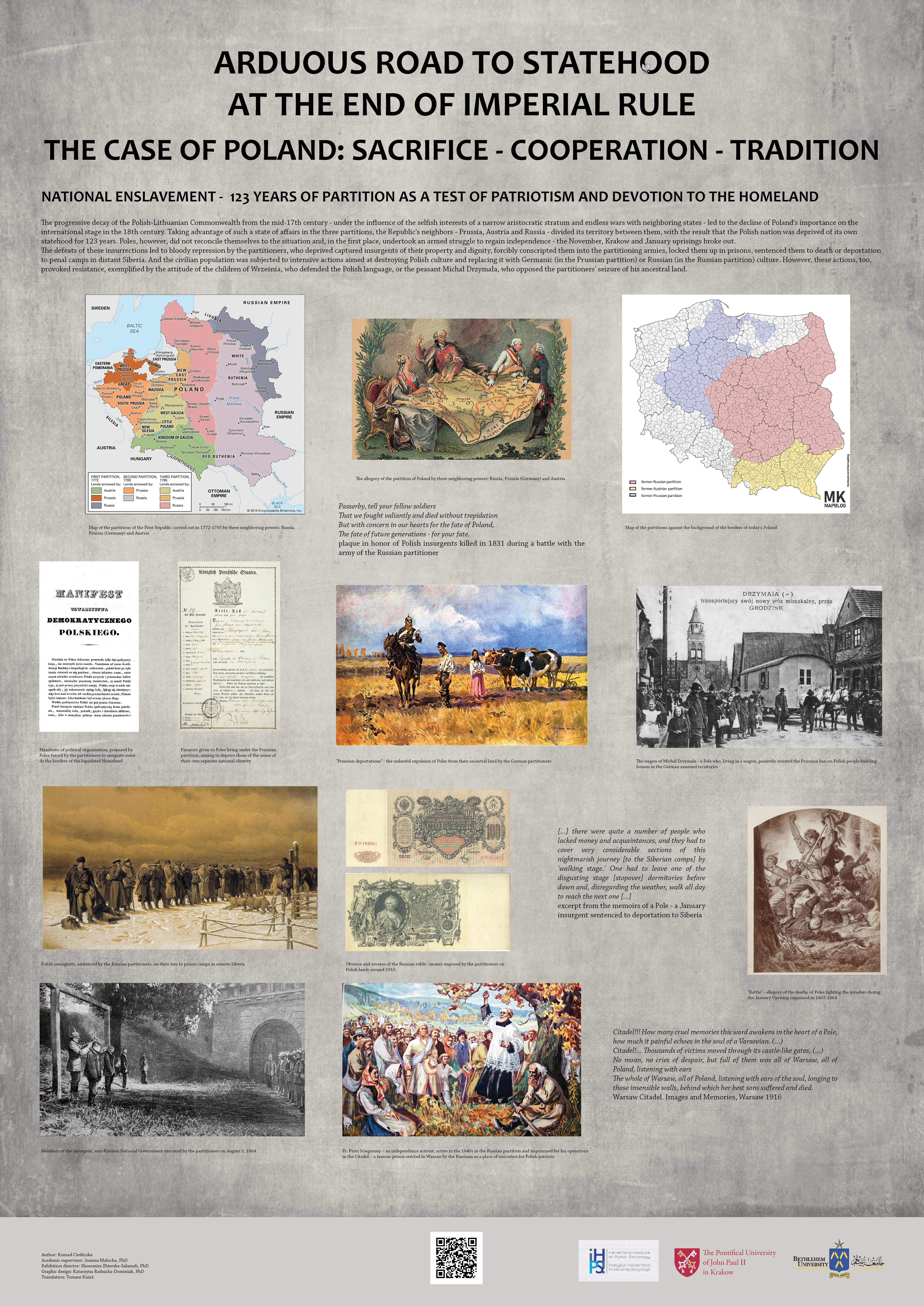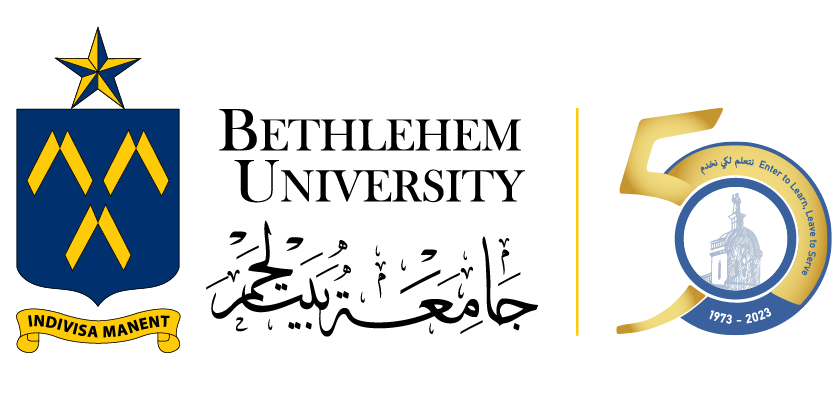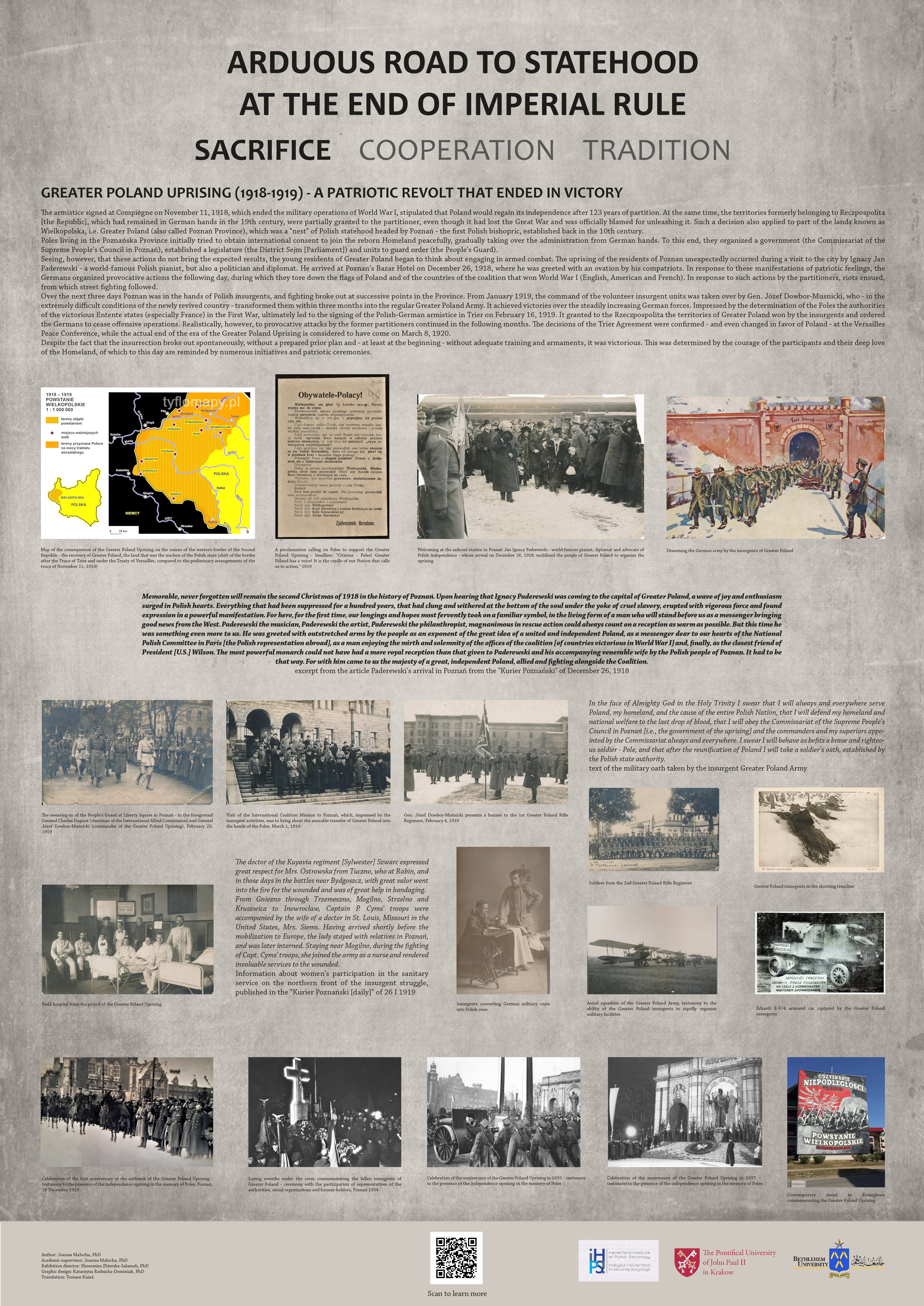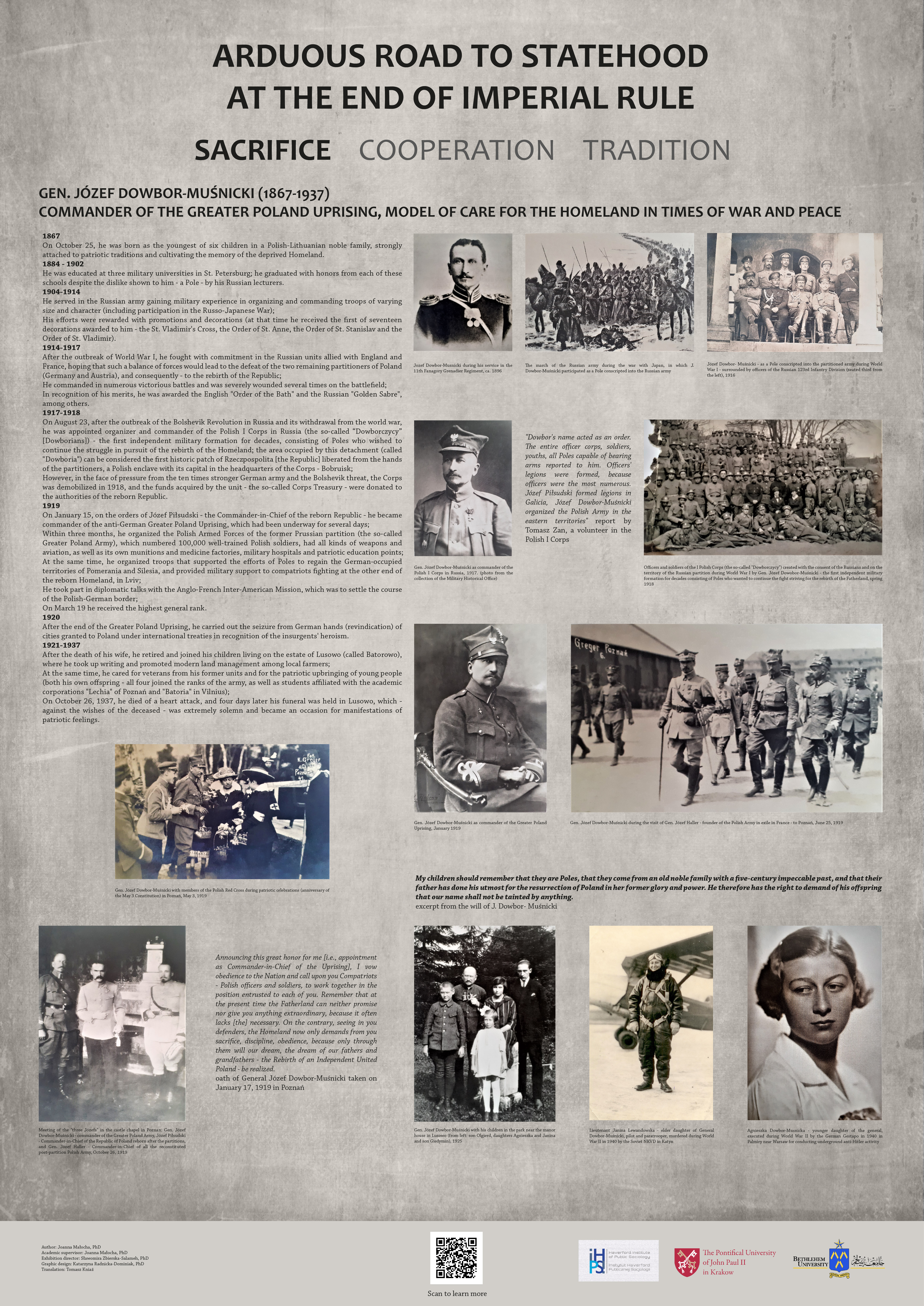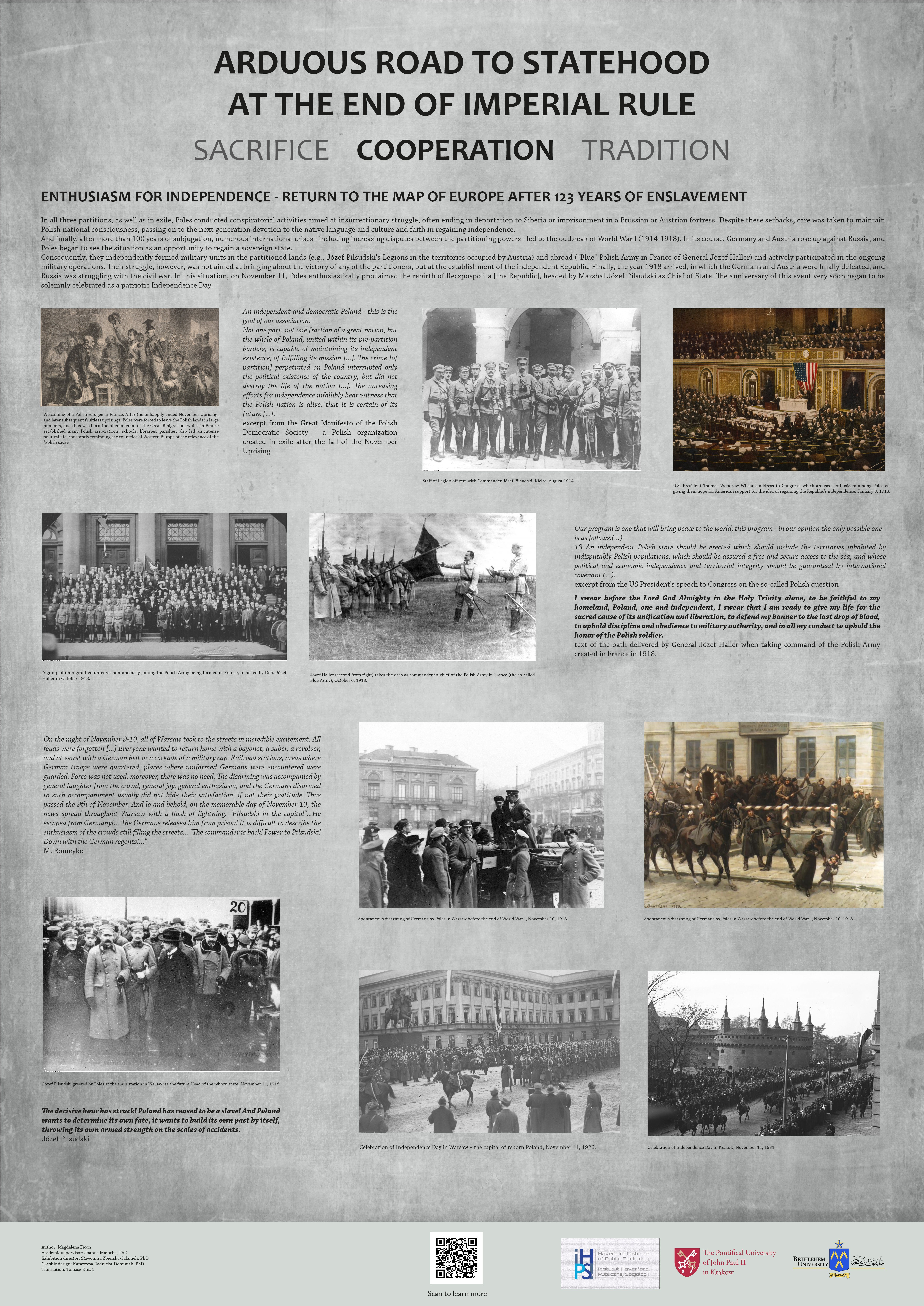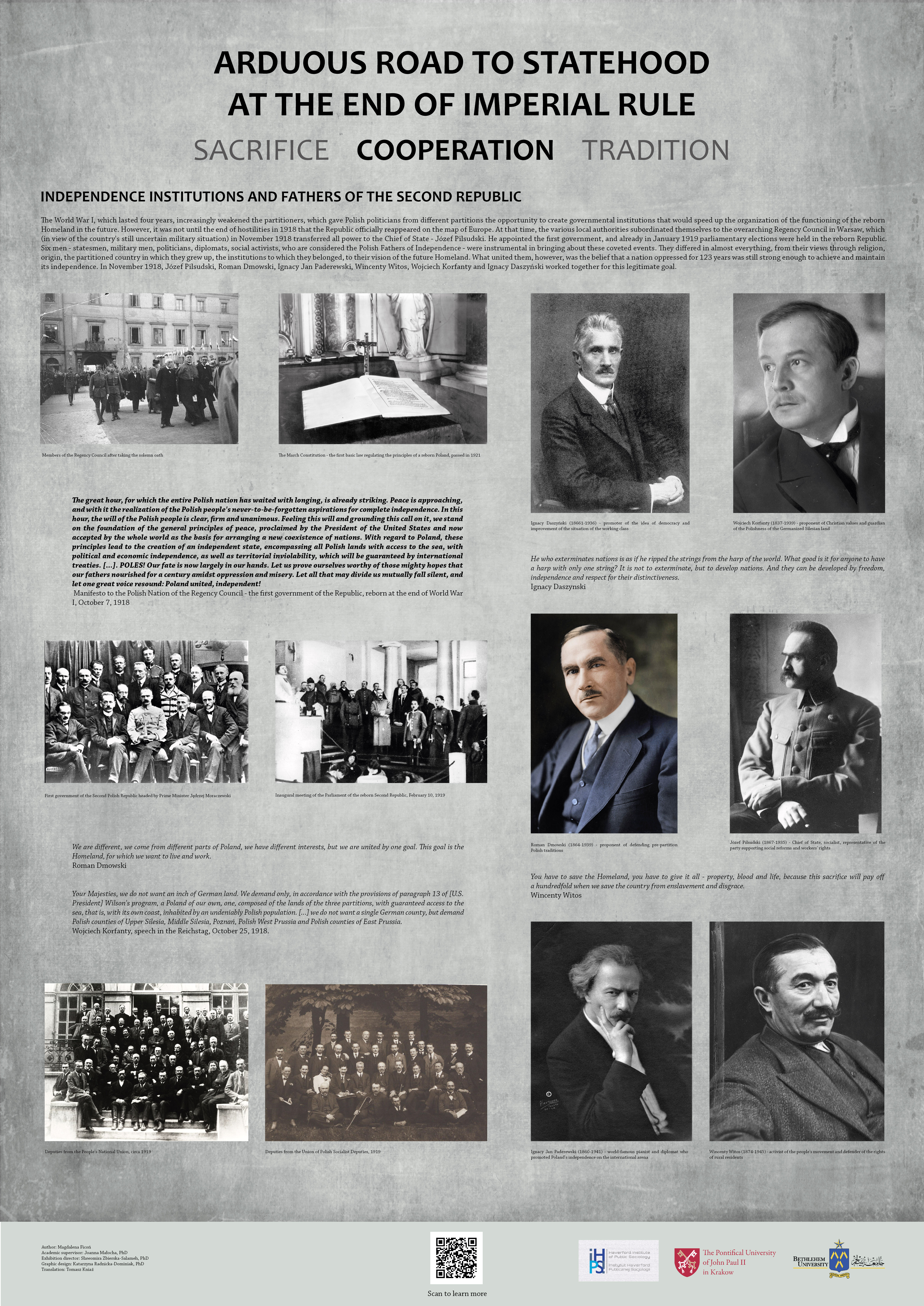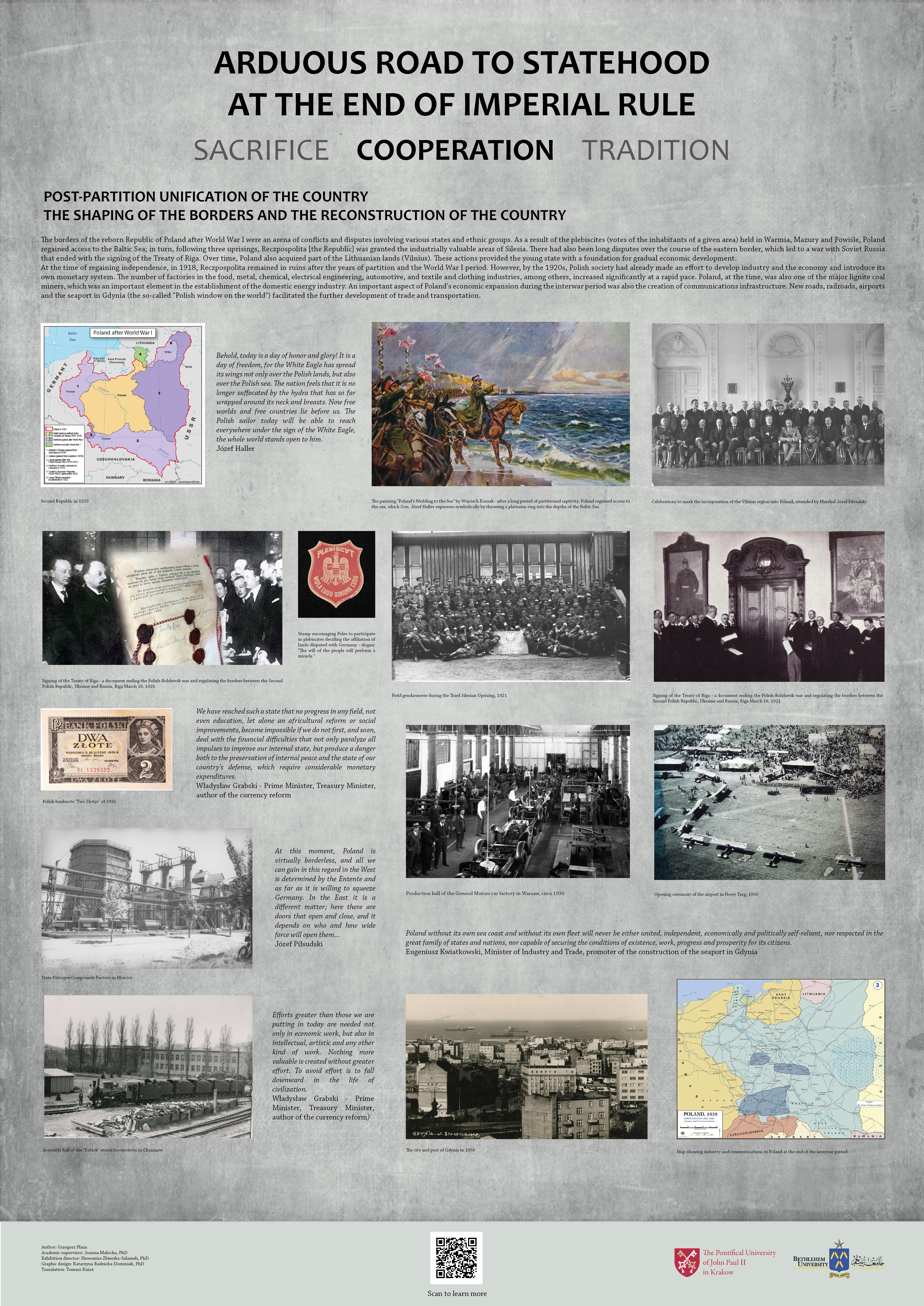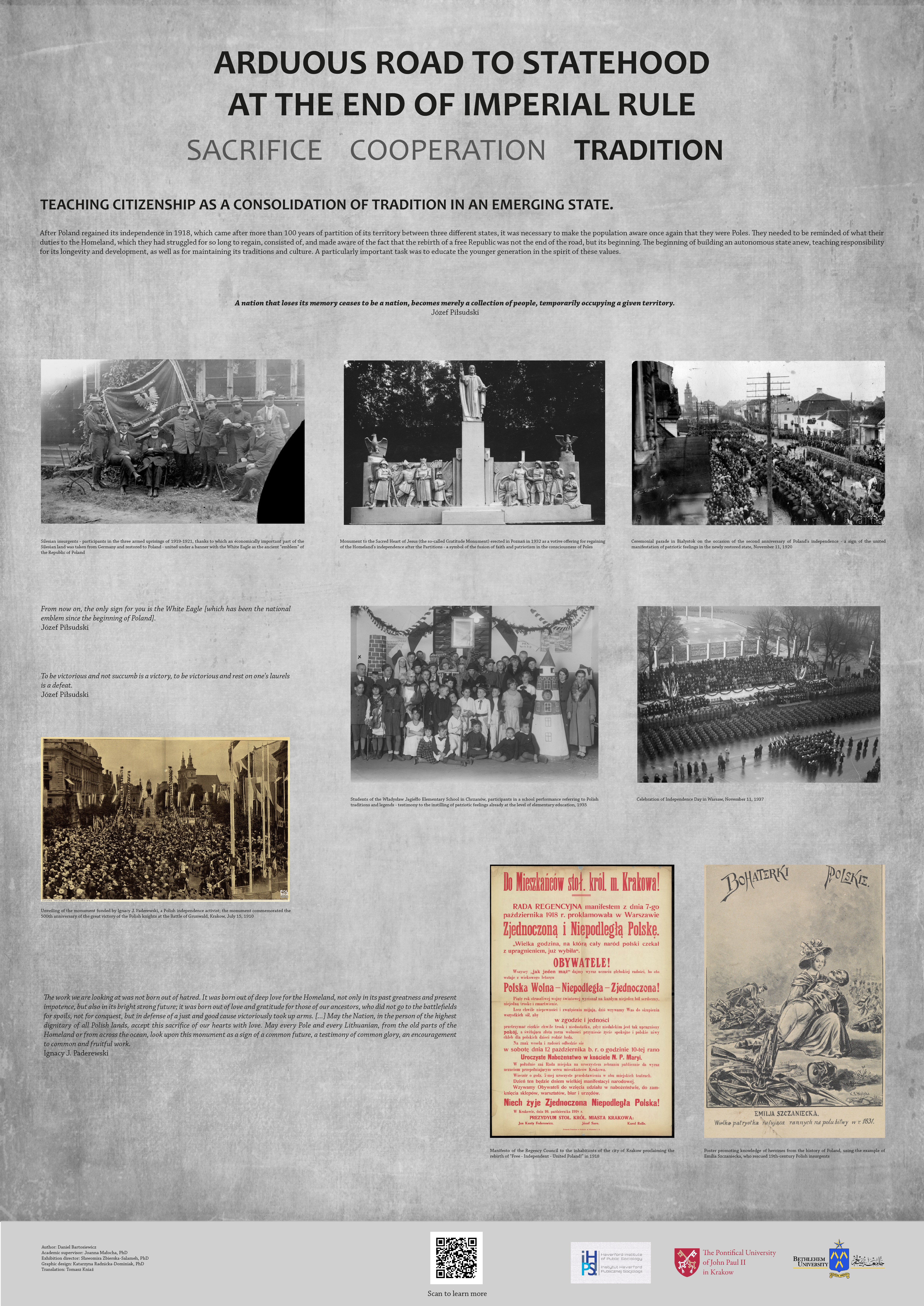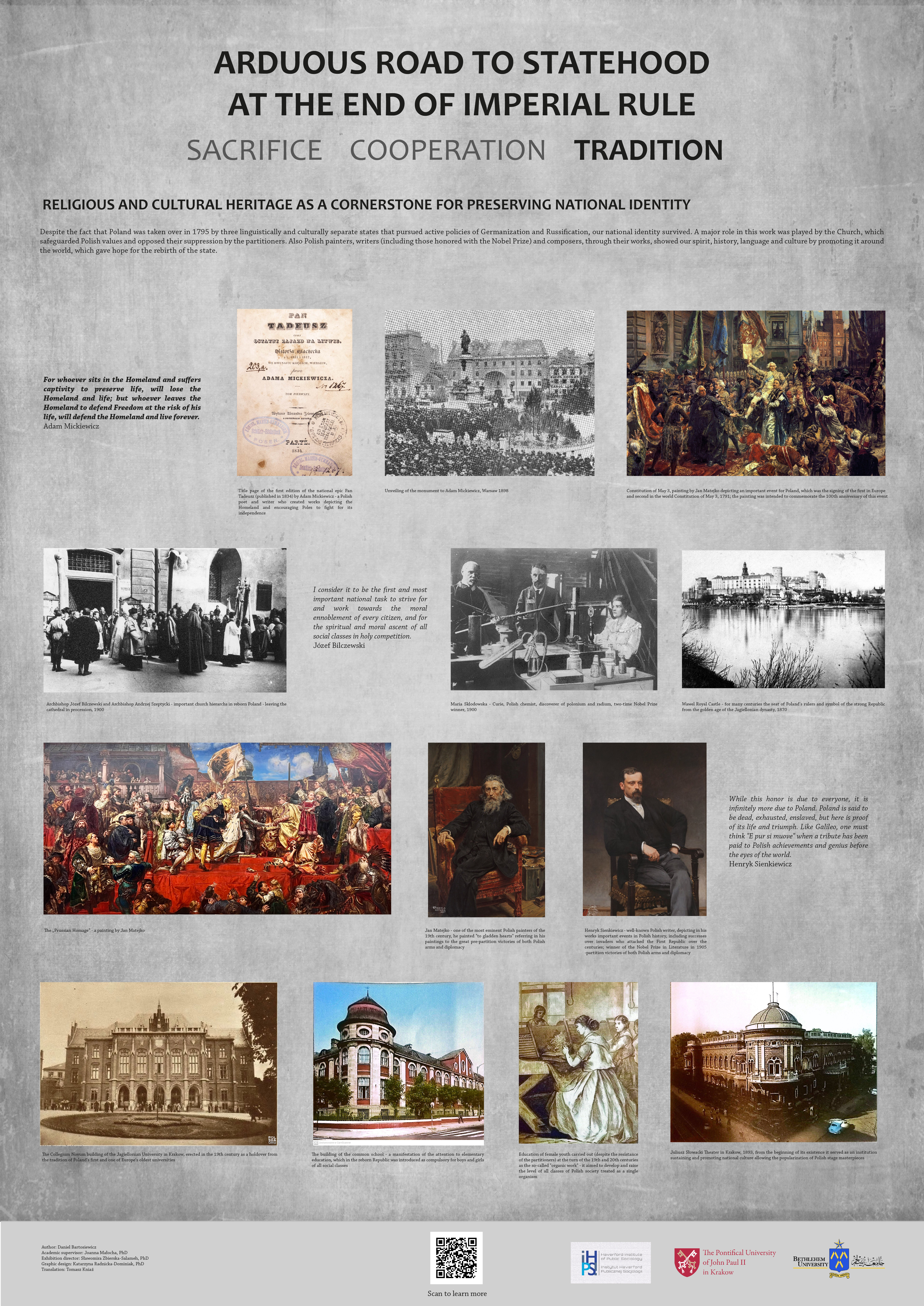Background
Three-quarters of a century after the Nakba in 1948, Palestinian society in general, and its youth in particular have struggled for generations demanding their liberty, independence, and self-determination. Yet, with each successive generation, the possibility of realizing these aspirations appear to be further away. Another nation waited twice as long to ultimately regain its self-determination and to establish its statehood.
Poland was wiped out from the map of Europe for nearly 150 years, during which the Polish nation was partitioned and annexed by Prussian, Russian, and Habsburg Empires, until the three Empires collapsed at the end of World War I. Then, at the Treaty of Versailles in 1919, Poland had to convince the war victors that it deserved a place on the new, post-war map of European nation-states.
This exhibition focuses on the three foundational elements —an uprising; civic participation and cooperation; and cultural heritage—in building the Polish state, and in putting Poland back on the map of Europe.
Hopefully, the aspirations of the Palestinian people will be realized in a shorter period of time…
